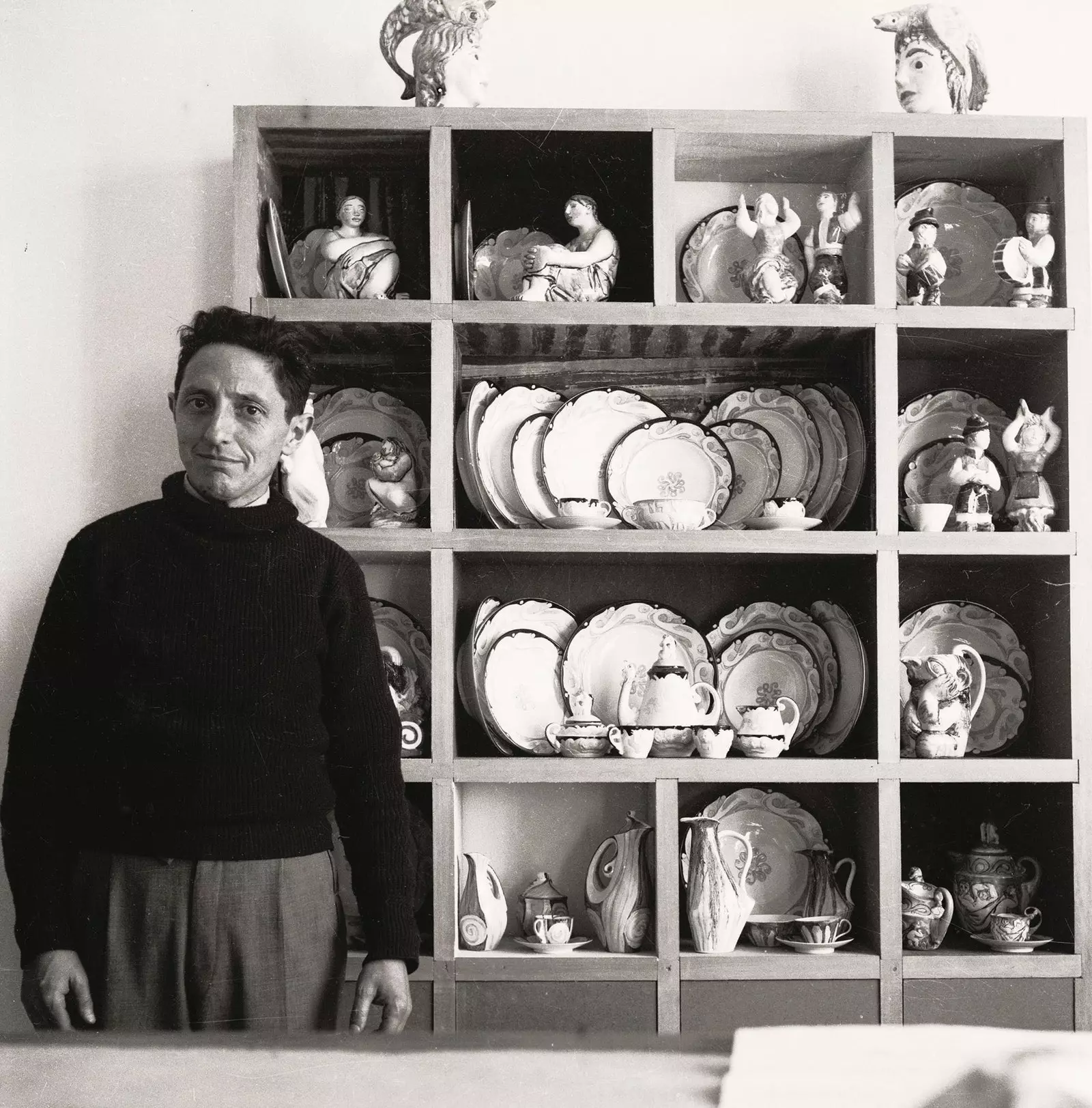
Isaac Díaz Pardo in the porcelain factory that he founded in the Argentine town of Magdalena
Until on April 4, 2021 you can visit Ace looks of Isaac in the Gaiás Center Museum of the City of Culture of Galicia (Santiago de Compostela), the first major exhibition dedicated to the Galician artist and intellectual, creator of the Laboratory of Forms or the Ceramics of Sargadelos, coinciding with the centenary of his birth.
The August 22, 1920 he was born in Santiago de Compostela, at number 37 of Rúa das Hortas, in what is better known as Casa da Tumbona-"a house of bad living"- Isaac Diaz Pardo. Perhaps his name today does not resonate in all ears as it should, but knowing that he was the ideologue and founder of the Forms Laboratory of Galicia, together with the artist Luís Seoane, design institution from which Cerámicas de Sargadelos, the Ediciós do Castro publishing house, the renovation of the Seminario de Estudos Galegos or the Carlos Maside Museum of Contemporary Art, among many other cultural companies, were born, perhaps it will help in this important task that is to remember and above all, claim.
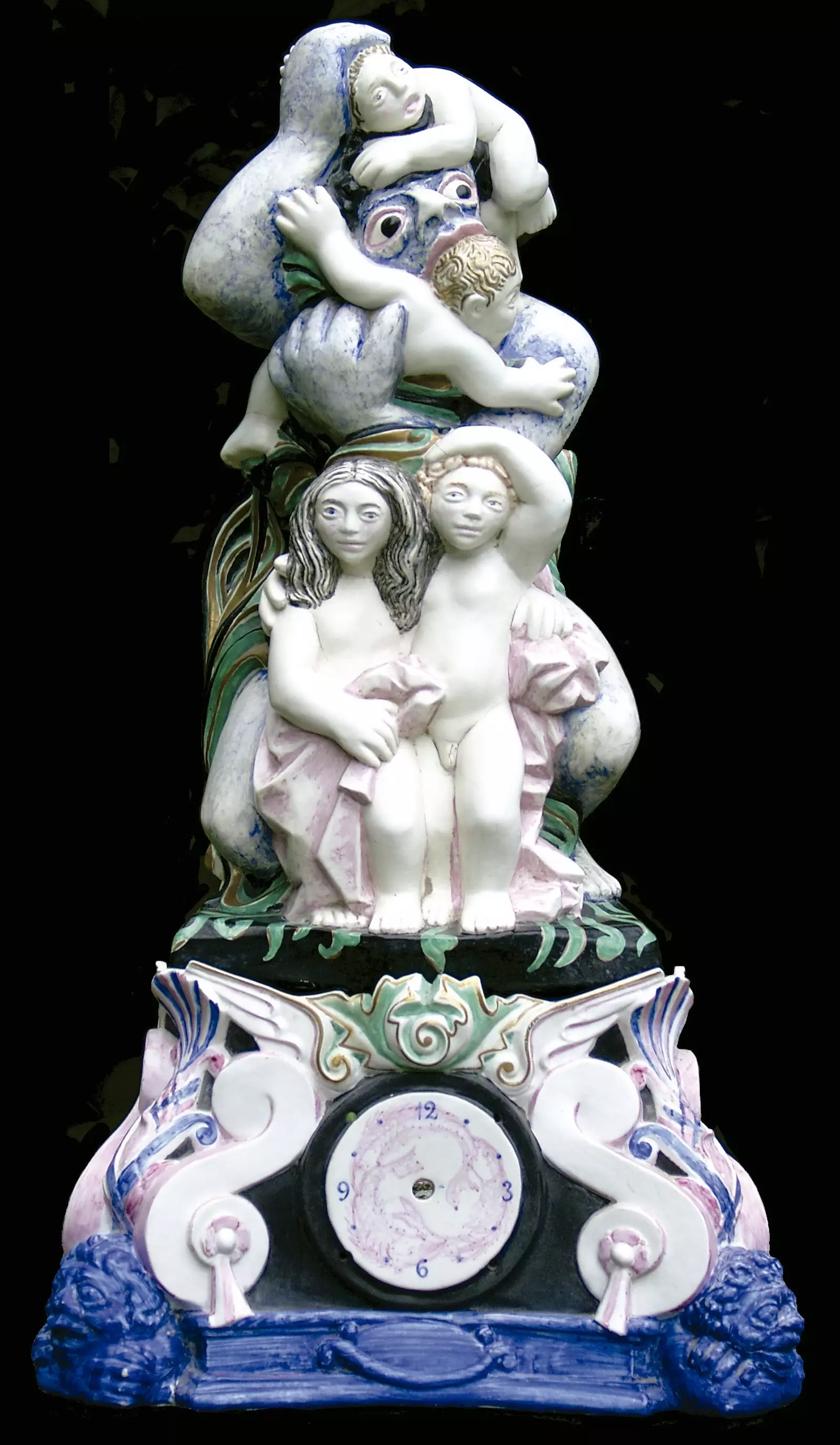
Isaac Díaz Pardo Saturn devouring years his fillos, ca. 1950
Behind all that wonderful cobalt blue, of those pristine porcelain tableware, of those unique and perishable designs, of unique forms described on many occasions as the Galician Bauhaus, hides a multifaceted and unrepeatable being with an overflowing artistic and humanist vocation who, for a moment, managed to change the course of things, and get ahead of time. Always with a charisma, honesty and commitment that ended up “decorating” him as “the most beloved person in the recent history of Galicia”.
How could it be otherwise? the centenary of the birth of Díaz Pardo coincides with a convulsive and dystopian year, according to the course of his life, in which he was overcoming all kinds of reactionary obstacles, such as the execution of his father in 1936 when he was only 16 years old, an event that will mark him for life.
Galicia finally pays his eternal debt with whom he managed -based on many years of effort and absolute dedication- recover his historical memory, his avant-garde thinking, his design, his business value, his identity and his art, and not only happy with it, he made it evolve and modernized it.
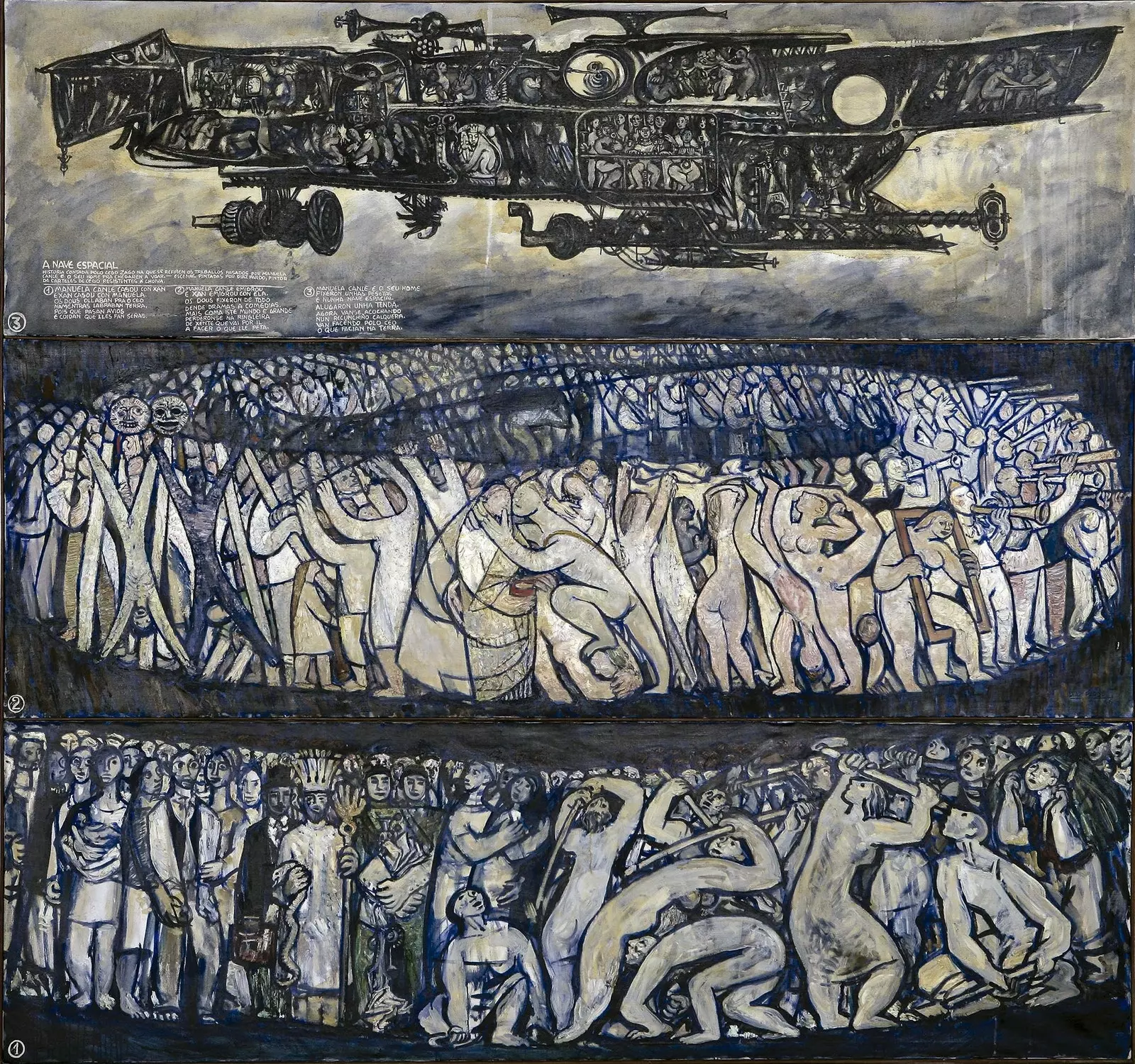
A spaceship, 1964 (triptych)
Ace looks of Isaac , curated with deep dedication by two of his sons, Xose and Camilo Diaz Arias de Castro, is vertebrate in 10 chapters that review each of the most outstanding facets of his life and work, with an audiovisual space that acts as a central axis, and where you can have an encounter with Isaac as a video installation.
A total of 263 pieces including paintings, posters, ceramic pieces, photographs, furniture, books, murals, sketches, architectural plans, personal belongings and videos with whom his polyhedral artistic, intellectual, industrial and committed universe with Galicia is being unraveled and analyzed, with the idea of making it known to the new generations and that its fate is not lost in oblivion: recover historical memory and preserve it.
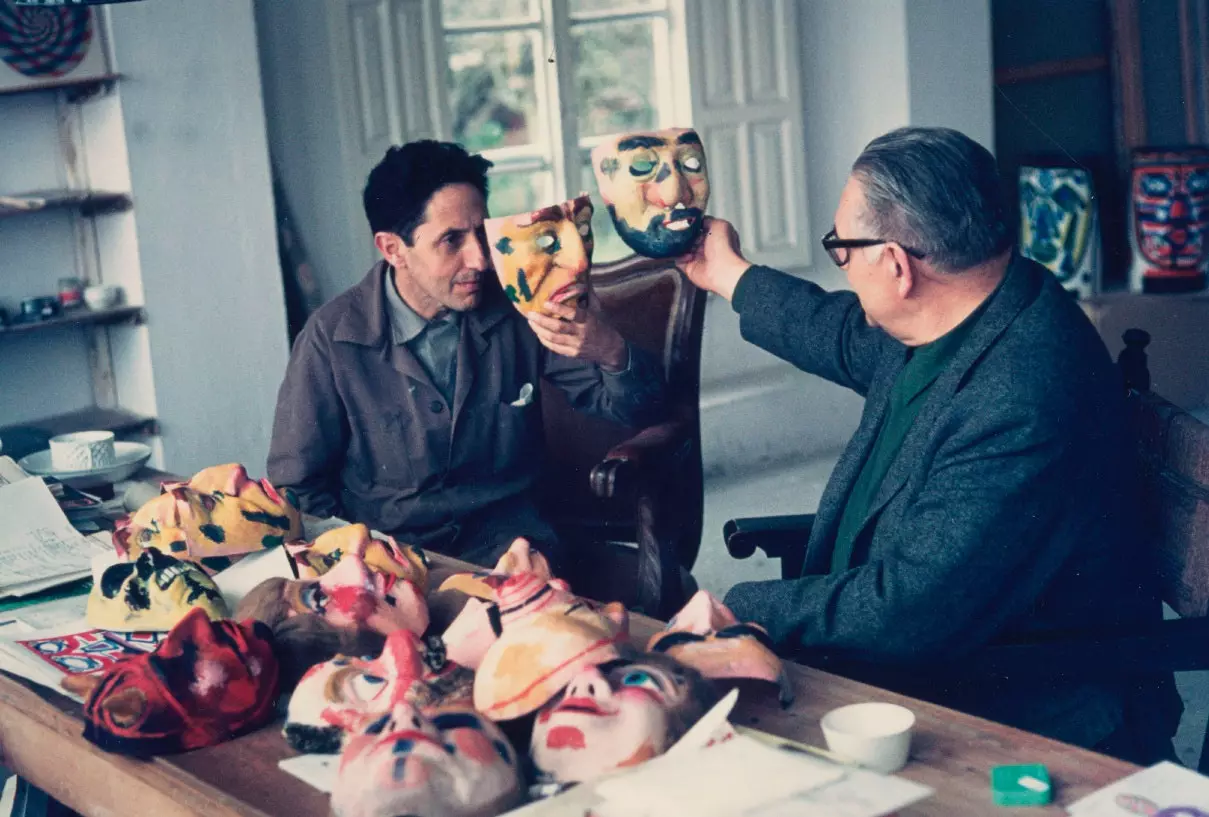
Isaac Diaz Pardo and Luis Seoane
The journey through Diazpardian cosmogony begins with the section dedicated to his father, Camilo Diaz Balino , set designer, painter and member of the Irmandades da Fala. A fundamental figure who will be key in the artistic and intellectual development of Isaac. From there, we go to memory of his childhood and adolescence in Santiago de Compostela , militant of the Socialist Youth designed many of the posters for the achievement of the Statute of Autonomy of Galicia.
After the death of his father and having to spend months in hiding in A Coruña, he gets a scholarship to study Fine Arts in Madrid where he ends up becoming a renowned painter, a discipline that one day he decides to leave radically when the then director of the Museo del Padro, proposes you to decorate the Valley of the Fallen.
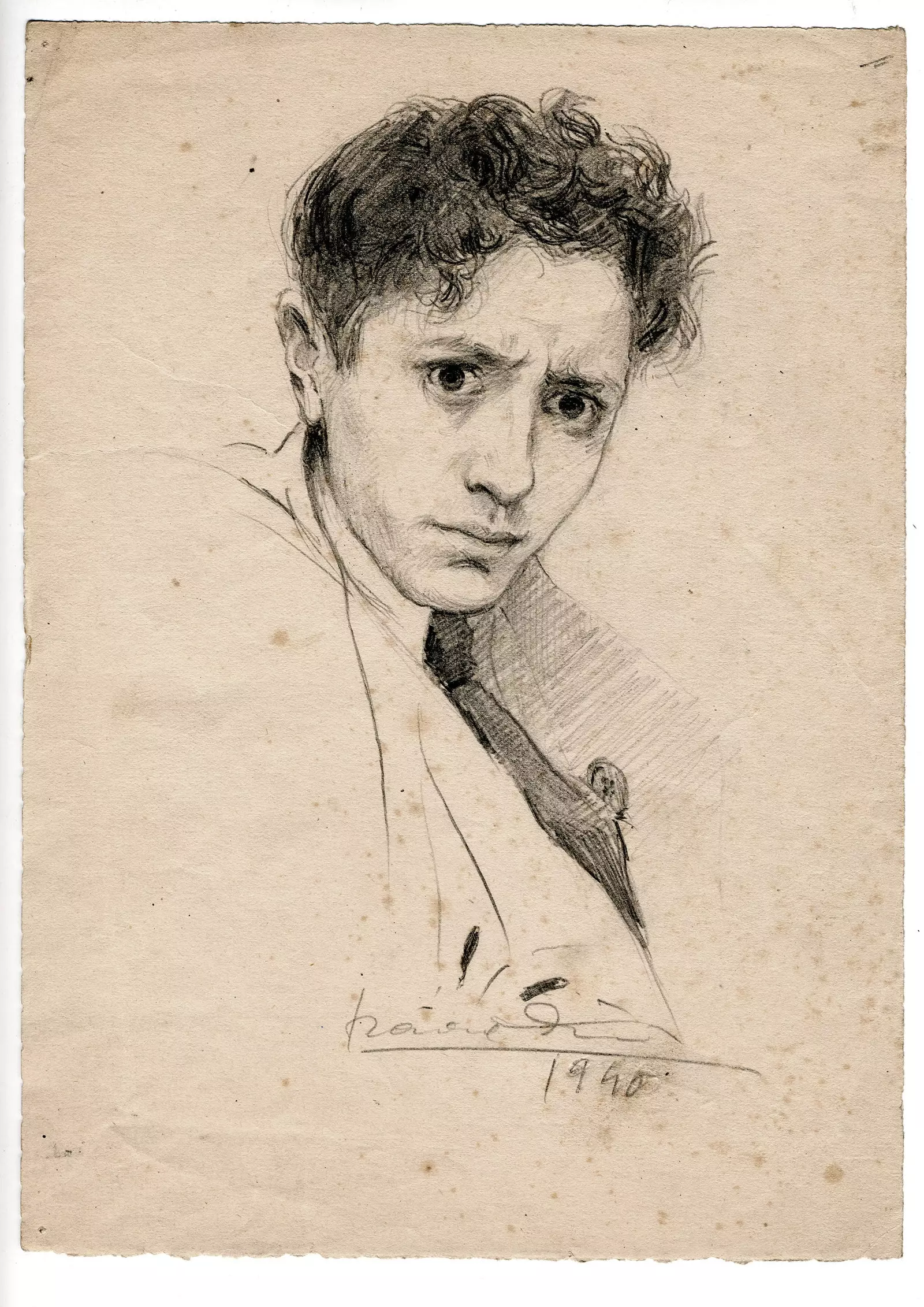
Self-portrait of Isaac Díaz Pardo (a true gem that appeared by chance, this year, between the pages of a book)
He returns to his native Galicia, specifically to the village of Castro Where was his wife from and eternal companion Mimina Arias de Castro , and he creates a small laboratory where he begins to make pottery. At the same time he begins to get in touch with all the exiled Galician artists, intellectuals and writers, especially in Argentina, among them, Luís Seoane, with whom he will create the Forms Laboratory.
From here on, the exhibition reviews one by one all the disciplines to which Díaz Pardo devoted himself: thought and writing, ceramic art and industry, recovery of historical memory, design and architecture, publishing, to end with a small sample of what was another of his great achievements, create the first museum of Contemporary Art in Galicia, the Carlos Maside Museum , and to be able to gather and preserve the work of avant-garde Galician artists.
